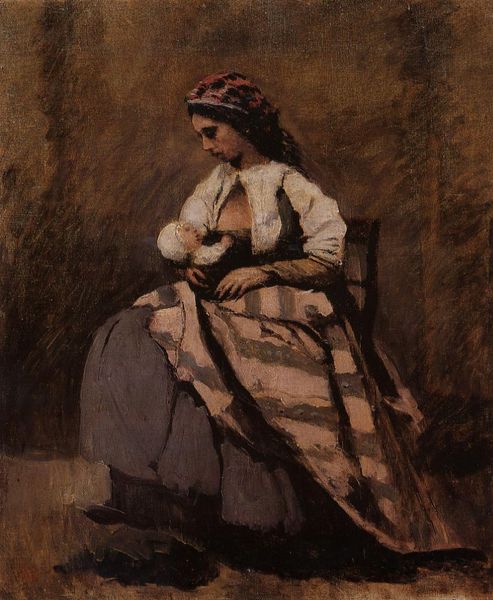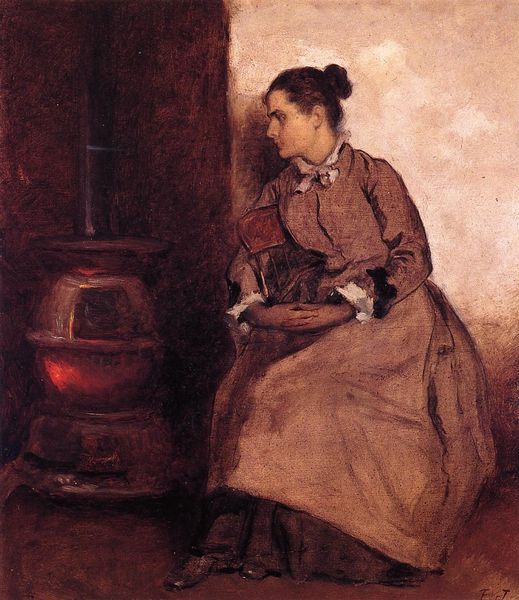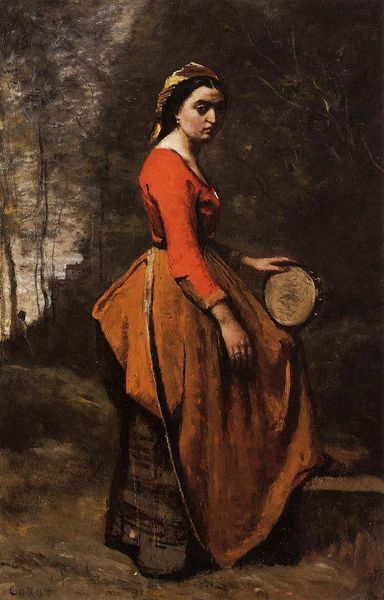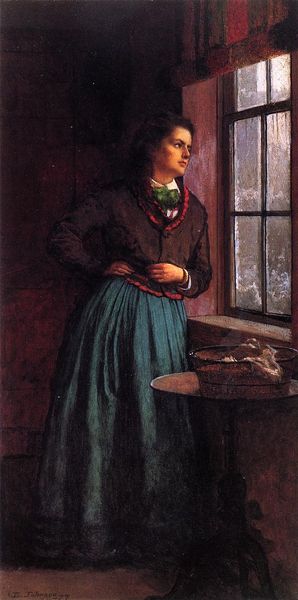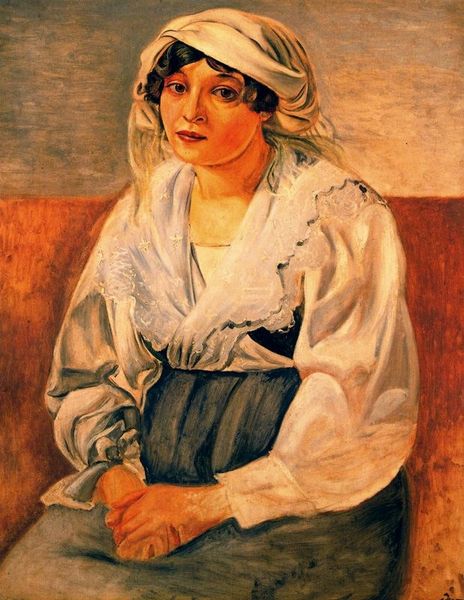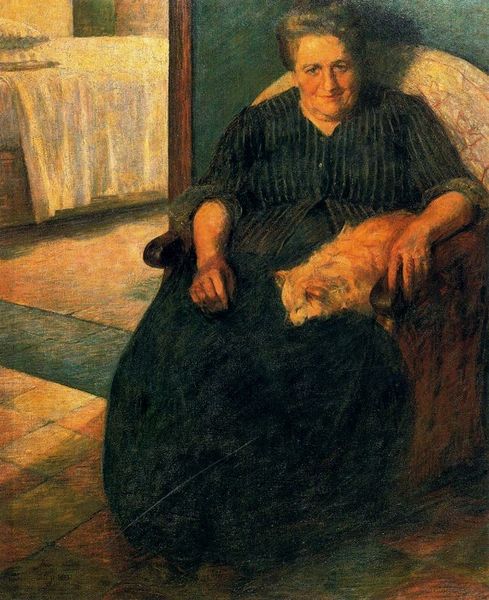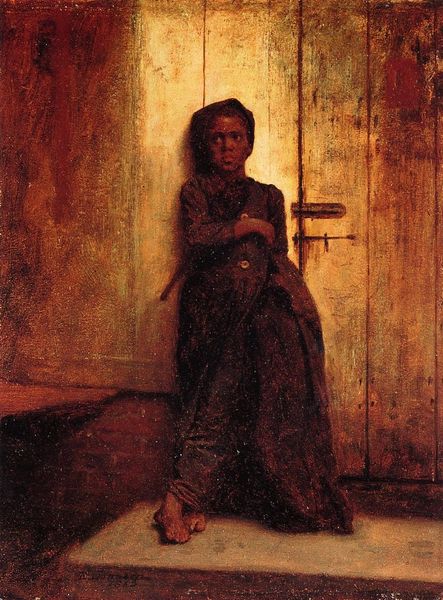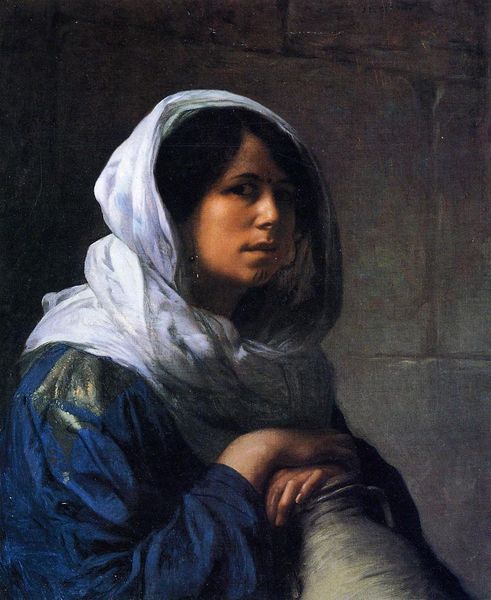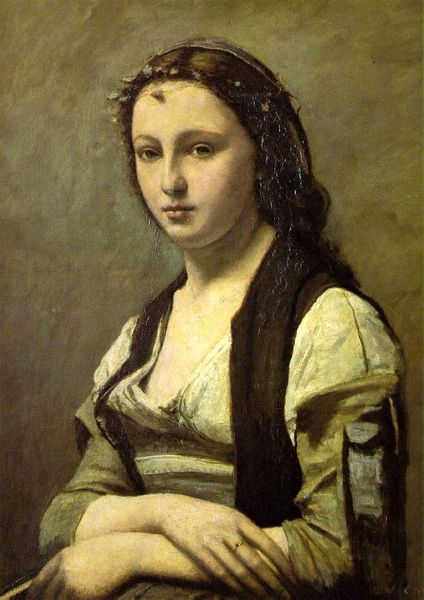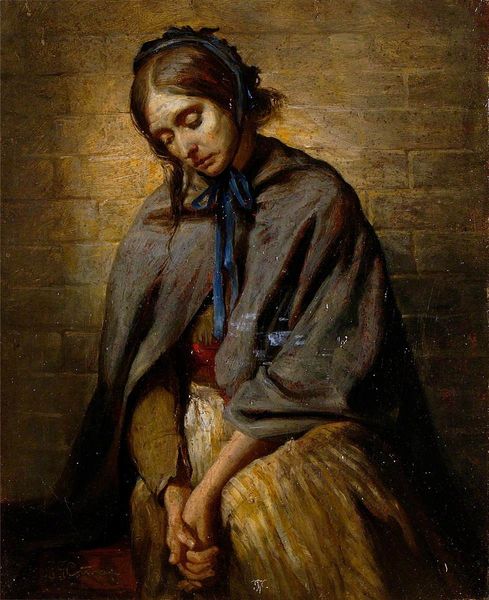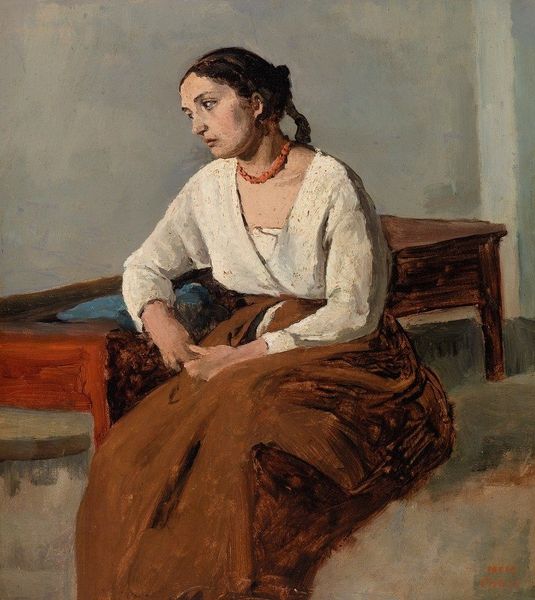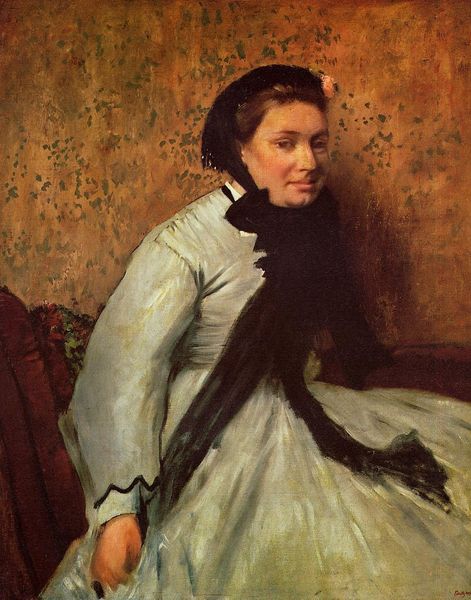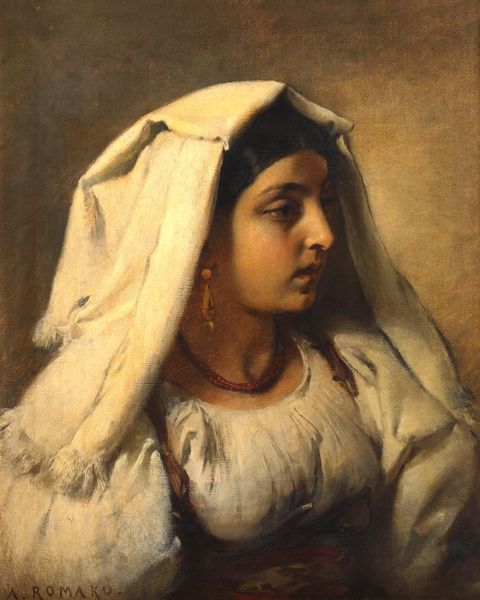
Dimensions: 100.3 x 75.2 cm
Copyright: Public domain
Curator: Here we have Edgar Degas's "A Roman Beggar Woman," painted in 1857 and currently housed at the Birmingham Museum and Art Gallery. It’s a strikingly intimate oil on canvas piece. What are your first impressions? Editor: A profound stillness. Her gaze is directed somewhere beyond the frame, lost in thought or perhaps resignation. There's an undeniable sense of weight here, both physical and emotional, reinforced by the simple arrangement of elements—the walls seeming to close in on the woman. Curator: That stillness resonates deeply when you consider the broader social context. This was painted during a period of significant upheaval in Italy. Degas's choice to depict this woman elevates her beyond a simple "genre painting." How might her image intersect with themes of poverty, gender, and social class in mid-19th-century Rome? Editor: Absolutely. Consider the visual vocabulary employed: the tattered shawl, the modest bowl, the very posture she adopts… Each object speaks volumes about her marginalized position. The striped shawl, draped over her head, is particularly striking—a symbol, perhaps, of protection or even imposed concealment. The shadow almost swallows the poor figure who seems to retreat as if to disappear. Curator: And notice Degas's deliberate use of light and shadow. He contrasts the harsh realities of her material existence with a quiet dignity. Do you read a potential critique of the social structures that confine her? Editor: There’s definitely an undercurrent of criticism, though subtle. Degas isn't overtly condemning, but rather inviting viewers to contemplate the human cost of social inequity. It avoids a heavy-handed message, relying on potent symbolic details to communicate the scene. The morsel of bread is an iconic symbol, reminding us about both religious associations as the 'Bread of Life' and the dire circumstances this beggarwoman lives. Curator: Considering it in the context of feminist theory, the painting portrays a world constructed with social roles assigned through gender, reinforcing inequalities, with economic and symbolic power placed firmly outside the woman's control. Editor: Agreed, this woman epitomizes vulnerability but holds a timeless, cross-cultural appeal. It is, indeed, about the endurance of the human spirit under oppressive circumstances, represented through subtle visual cues that build up over time. Curator: This exploration has deepened my understanding of Degas's perspective, bridging historical narrative and contemporary concerns. Editor: And for me, it's confirmed that the most powerful artworks use symbolism to make statements that speak for years and across borders.
Comments
No comments
Be the first to comment and join the conversation on the ultimate creative platform.
